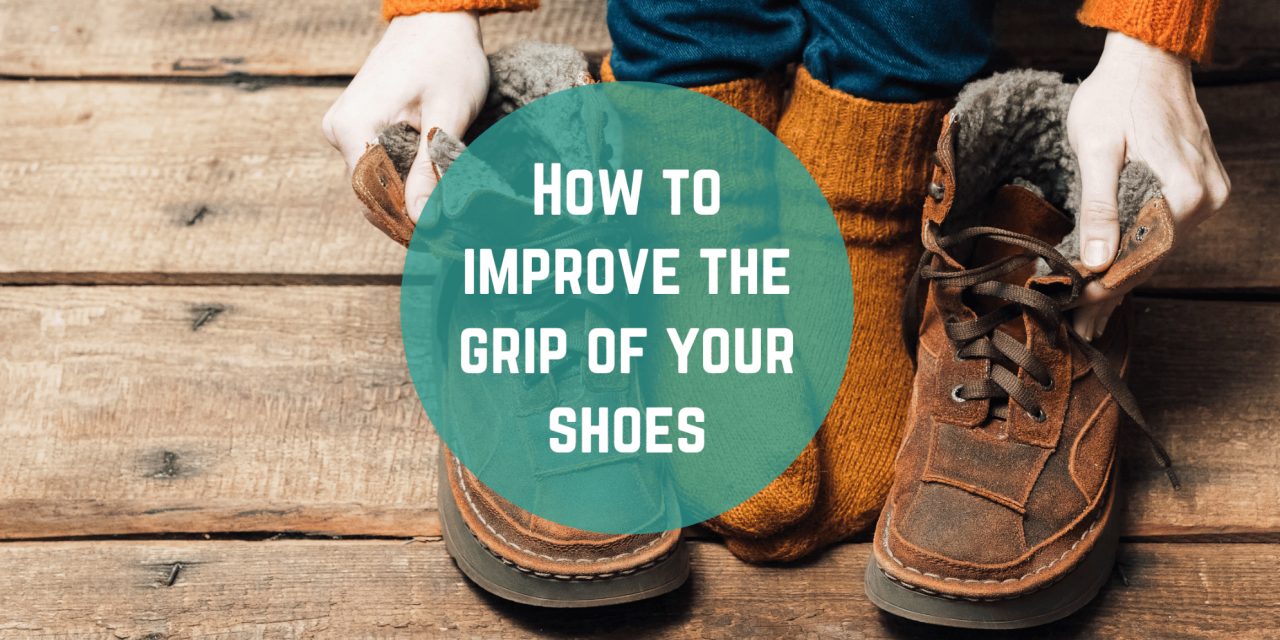Sadly I’ve seen a couple of serious slips the past few days – everyone will be fine but one lady was taken away in an ambulance. It got me thinking about footwear, and I started to notice the footwear people were wearing out in the icy conditions. So I researched footwear for icy conditions and I thought I’d share the findings.
Can you improve the grip of your existing shoes? That was the first thing I researched. And the answer is yes – there are lots of ways to improve the grip of your existing shoes. The methods suggested may or may not appeal to you depending on how valuable your shoes are and whether you want to make permanent changes or not.
What are the best types of shoes for icy conditions? The second thing I researched was this. Are there types of shoes that have better grip in icy conditions? I’d always assumed my walking boots were the best shoes for icy days, but I was happy to challenge that assumption.
Improving the grip of existing shoes
Rubber bands
This is by far the cheapest and easiest option. You can increase the grip of your shoes by wrapping rubber bands around them so they cross over the soles.
Knife and Glue
Another, more permanent option, is to score your soles in a zig-zag pattern and fill some of the gaps with rubberised glue. The rubber will add grip and the non-filled scores will help water pass through as it would flow through the tread of a grippier shoe.
Traction sprays
You can actually buy grip spray. There are lots of different ones on the market – some contain sand, others change the grip or texture in other ways. Just type ‘Traction spray for shoes’ in your choice of search engine.
Scuffing the soles
Another cheap and easy option if you’re not too precious about your shoes. You can take a gritty sandpaper and remove any polished surface of a sole and add texture and surface area which improves your grip.
Add extra grips
Useful for ice but even more useful for snow – you can buy over-shoe grips which instantly turn your shoes into a type of snow shoe. A cheaper option for icy pavements is stick-on grips – usually sold as a heel or toe grip area, but there are lots of different options out there.
New soles
The most expensive option but will also add new life to your shoe for the rest of the year – why not invest in a new, grippier sole?
Which shoes are best for icy conditions?
This is a question that I didn’t get such a clear answer to. It came down to a fight between hiking boots and snow boots but it depends on other factors such as temperature. Both of these types of boots are good for icy conditions but the snow boots will keep you warner and the hiking boots are likley to be more comfortable over longer distances.
You could also opt for an insulated Wellington boot which came up in a few articles I read. Another suggestion was to get an insulated/lined cowboy boot – I can’t say that’s what immediately sprung to mind when I wondered which footwear was best in snow and ice haha. But it has got me thinking…..?











